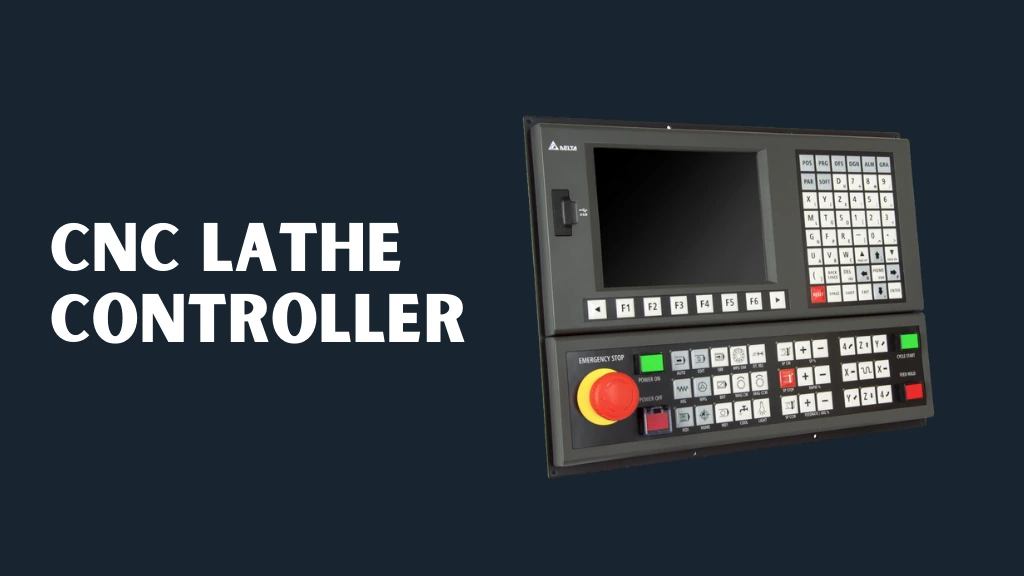A CNC lathe controller is an electronic system that allows a lathe machine to operate automatically. Instead of manually moving the tool and spindle, the controller interprets computer-aided design (CAD) files and converts them into precise machine instructions. This automation enhances accuracy and repeatability, enabling operators to produce complex shapes and high-quality finishes that would be difficult or impossible with manual machining.
Using a CNC controller also significantly reduces human error. Even highly skilled machinists are prone to inconsistencies when performing repetitive tasks over long production runs. With the controller in place, manufacturers and hobbyists alike can focus more on design and quality control rather than repetitive manual operation. These systems also allow for faster production cycles, making them a valuable investment for any modern workshop.
Key Components of a CNC Lathe Controller
To understand how a CNC lathe controller works, it is helpful to know its main components. The central processing unit (CPU) acts as the brain, processing incoming instructions and coordinating all machine operations. Input/output modules link sensors, switches, and motors, ensuring that the controller can send and receive data from the machine components.
The user interface is often a touchscreen or a computer terminal that allows operators to input commands, monitor processes, and adjust parameters as needed. Servo drives and motors are responsible for the precise movement of the spindle and tool, while memory and storage store program files, configuration settings, and tool data. Together, these components enable the machine to perform precise and complex operations consistently. Modern controllers also incorporate advanced safety mechanisms, monitoring real-time operations to prevent collisions or mechanical failures.
Types of CNC Controllers
CNC lathe controllers are available in different types, each designed to meet specific operational needs. PC-based controllers use standard personal computers as the interface, allowing flexible programming and integration with existing systems. These controllers are suitable for small-scale or medium-production environments where adaptability and customization are important.
Dedicated hardware controllers are purpose-built for CNC machines and provide exceptional reliability and speed. They are commonly used in industrial manufacturing environments where high production volumes and consistent output are critical. Hybrid controllers combine features from both PC-based and dedicated hardware systems. They offer the flexibility of a PC interface while maintaining the reliability of hardware control, making them an ideal choice for workshops that require both adaptability and performance.
How Lathe Controllers Work
The operation of a CNC controller can be broken down into three stages. In the first stage, the controller receives input in the form of CAD or CAM files. These files contain detailed design information, specifying dimensions, tool paths, and machining instructions. The second stage involves processing these instructions, translating them into precise commands for the lathe’s motors and actuators. This stage ensures that the machine follows the design specifications accurately.
In the third stage, the controller sends the commands to the machine components, moving the spindle and tool along the designated paths. Many modern controllers include simulation capabilities, allowing operators to preview the machining process virtually. This feature helps prevent errors and reduces waste, as potential issues can be identified and corrected before the actual machining begins.
Features to Consider in a CNC Controller
When evaluating CNC lathe controllers, several important features can impact performance and usability. Multi-axis control is essential for machines that require simultaneous movement along multiple axes. The user interface should be intuitive, allowing operators to program and monitor the machine with minimal training. Memory capacity is another consideration, as sufficient storage is necessary for large programs, multiple tool paths, and complex machining operations.
Remote monitoring capabilities allow supervisors to track machine performance in real time, which can be particularly useful for larger facilities with multiple machines. Safety features such as emergency stops, overload protection, and alarms are critical to prevent accidents and protect both operators and the machine. Evaluating these features carefully ensures that the controller you choose aligns with your production needs and safety standards.
Installation and Setup Tips
Proper installation and setup are vital to the long-term performance of a CNC controller. Begin by verifying that the power supply matches the controller’s specifications, as incorrect voltage can damage the system. Secure mounting is necessary to prevent vibrations that could affect machining precision. Cable management is another essential step; cables should be routed neatly to avoid interference or accidental disconnections.
Once the hardware is installed, initial calibration of all axes is crucial. Calibration ensures that tool paths are accurate and that parts are produced to the correct specifications. It is also important to keep the controller’s software and firmware updated, as updates often include bug fixes, performance improvements, and new features that enhance usability and reliability.
Programming a CNC Controller
Programming a CNC controller involves creating tool paths and defining machining parameters. The process typically starts with loading a CAD or CAM design into the controller. Operators then define cutting paths, speeds, and feed rates, specifying how the machine should interact with the material. Once programming is complete, a simulation can be run to verify the tool paths and detect potential issues before actual machining begins.
The program is then executed on the lathe, guiding the spindle and tool along the predefined paths. Many modern controllers offer visual programming interfaces that simplify this process, making it accessible even to users who may not be experts in traditional G-code programming. This combination of automation and flexibility enables shops to maintain high-quality output while reducing the learning curve for new operators.
Troubleshooting Common Issues
Even well-maintained controllers may encounter operational issues. When the machine does not respond, the problem may be a loose connection or a power supply issue. Inaccurate cuts can often be traced to calibration errors, which can be corrected by rechecking and recalibrating the machine axes and tools. Software crashes are sometimes caused by outdated firmware, highlighting the importance of regular updates. Tool path deviations may result from mechanical backlash or worn components, which require inspection and adjustment.
Maintaining a detailed log of machine errors and interventions can help identify patterns and prevent recurring problems. With proper troubleshooting practices, most operational issues can be resolved quickly, minimizing downtime and maintaining consistent production quality.
Maintenance Best Practices
Regular maintenance is critical to prolonging the life of a CNC controller and ensuring accurate performance. Cleaning the controller and its surrounding environment prevents dust and debris from interfering with electronics. Software updates should be applied regularly to maintain system stability and take advantage of new features. Cables and connectors should be inspected for wear or damage, and calibration checks should be performed every few months to maintain precision.
Keeping detailed records of maintenance activities and machine performance also provides valuable insights for optimizing operations. Shops that follow these best practices typically experience fewer breakdowns, higher-quality output, and more efficient production cycles.
Real-World Applications
Lathe controllers have a wide range of applications across multiple industries. In the automotive sector, they are used to manufacture engine parts, drive shafts, and other high-precision components. Aerospace companies rely on these systems for the production of turbine blades, structural components, and custom parts that require exact tolerances.
In woodworking, lathe controllers enable the creation of custom furniture, decorative elements, and intricate designs that would be difficult to achieve manually. Metalworking industries use them to produce precision components for machinery, tools, and industrial equipment. By providing consistent quality, speed, and repeatability, these controllers have become indispensable in modern manufacturing processes.
Conclusion
A CNC lathe controller is an essential tool for modern workshops and manufacturing facilities. It ensures high precision, consistent output, and faster production cycles, reducing human error and enhancing efficiency. By understanding the key components, types, features, and best practices for installation, programming, and maintenance, operators can maximize the benefits of CNC automation.
Choosing the right controller involves evaluating your production needs, assessing safety and usability features, and maintaining the system properly. With careful selection and regular maintenance, these controllers can provide long-term reliability, high-quality results, and measurable improvements in manufacturing processes.
FAQs
What is the difference between a CNC controller and a standard lathe controller?
A CNC controller automates machine movements according to digital instructions, while a standard controller requires manual operation. This automated system enables more complex designs, higher precision, and reduces human error.
Can I upgrade my existing lathe with a CNC controller?
Yes, many older lathes can be retrofitted with PC-based or hybrid CNC controllers. Upgrading allows workshops to modernize their equipment without investing in entirely new machinery.
How long does a lathe controller last?
With proper maintenance, a CNC controller can last between 10 and 15 years. Components such as motors and drives may require periodic replacement, but the controller itself remains functional for long-term use.
Do controllers require special training?
While basic operation is relatively straightforward, advanced programming and troubleshooting typically require training. Many manufacturers provide tutorials, manuals, and certification programs to help operators gain the necessary skills.
Are CNC controllers expensive?
Costs vary depending on the type and capabilities of the controller. You can purchase hobby-grade systems for a few hundred dollars, while industrial-grade controllers can cost several thousand dollars. The investment is often justified by increased productivity, precision, and reduced labor costs.




